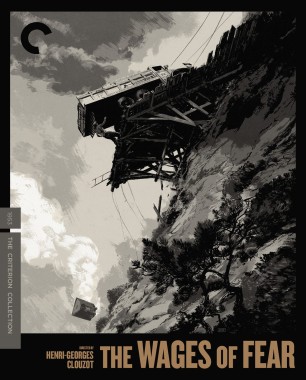Seventy Years of Cannes: The Wages of Fear in 1953

To toast the seventieth anniversary of the Cannes Film Festival, which has been in full swing since last Wednesday, I’m spending this week looking back on a top-prize winner from each decade of the festival’s history, dishing up details on the film’s production as well as stories about the year it won. I thought this would be a neat way both to highlight the range of international cinema that has premiered at Cannes over the years and to delve into the controversies and industry politics that have placed this annual event at the center of the film world.
My first entry does just that, with an example of classic French cinema at its most combustible: Henri-Georges Clouzot’s 1953 The Wages of Fear, a nail-biting drama that follows the story of four men tasked with driving two trucks of nitroglycerin across perilous terrain. Adapted by Clouzot and his brother, Jean (working under the pseudonym Jérôme Geronimi), from Georges Arnaud’s 1950 novel Le salaire de la peur, the film transfers the story from Guatemala to the fictional Latin American village of Las Piedras. Clouzot formed his own production company specifically for this project, naming it after his wife, Véra, for whom he created a role that didn’t exist in the novel’s all-male cast of characters. Filming started on August 27, 1951, in the South of France and was originally planned on a nine-week schedule, but the production ran into numerous problems that led to completion being delayed until the summer of 1952 and the budget going over by 50 million francs. The film’s misfortunes didn’t end there: due to its negative portrayal of a fictional American oil company, several parts were deemed “anti-American,” resulting in significant cuts for the U.S. release. But in spite of this rocky start, The Wages of Fear has since become one of the most acclaimed thrillers of its era, spawning a remake by Oscar-winning director William Friedkin (1977’s Sorceror) and, most recently, rumors of an Africa-set update by British filmmaker Ben Wheatley, featuring an all-female cast.
Thanks to a jury presided over by Jean Cocteau and including director Abel Gance, actor Edward G. Robinson, and screenwriter Charles Spaak, The Wages of Fear took the top prize at the festival’s sixth edition, the Grand Prix (the Palme d’Or did not come into play until the 1955 festival), along with the best actor prize for Charles Vanel. The 1953 event, which ran from April 15 to 29, opened with Jean Dréville’s Horizons sans fin and continued with an in-competition lineup including Kaneto Shindo’s Children of Hiroshima, Luis Buñuel’s Él, Alfred Hitchcock’s I Confess, Jacques Tati’s Monsieur Hulot’s Holiday, John Ford’s The Sun Shines Bright, Vittorio De Sica’s Terminal Station, and Luis García Berlanga’s Welcome Mr. Marshall!, which picked up the International Prize. Walt Disney received the Jury Special Prize, while Daniel Mann’s Come Back, Little Sheba took home best dramatic film and best actress for Shirley Booth. But film wasn’t the only thing on people’s minds: the appearance on the beach of a bikini-clad, eighteen-year-old Brigitte Bardot had the Croisette all abuzz. This edition also set the stage for one of cinema’s longest-lasting partnerships: that of Anne Buydens, who was appointed the festival’s Head of Protocol, and her future husband, Kirk Douglas, who was in Cannes to meet with Ulysses producers Dino de Laurentiis and Carlo Ponti.




